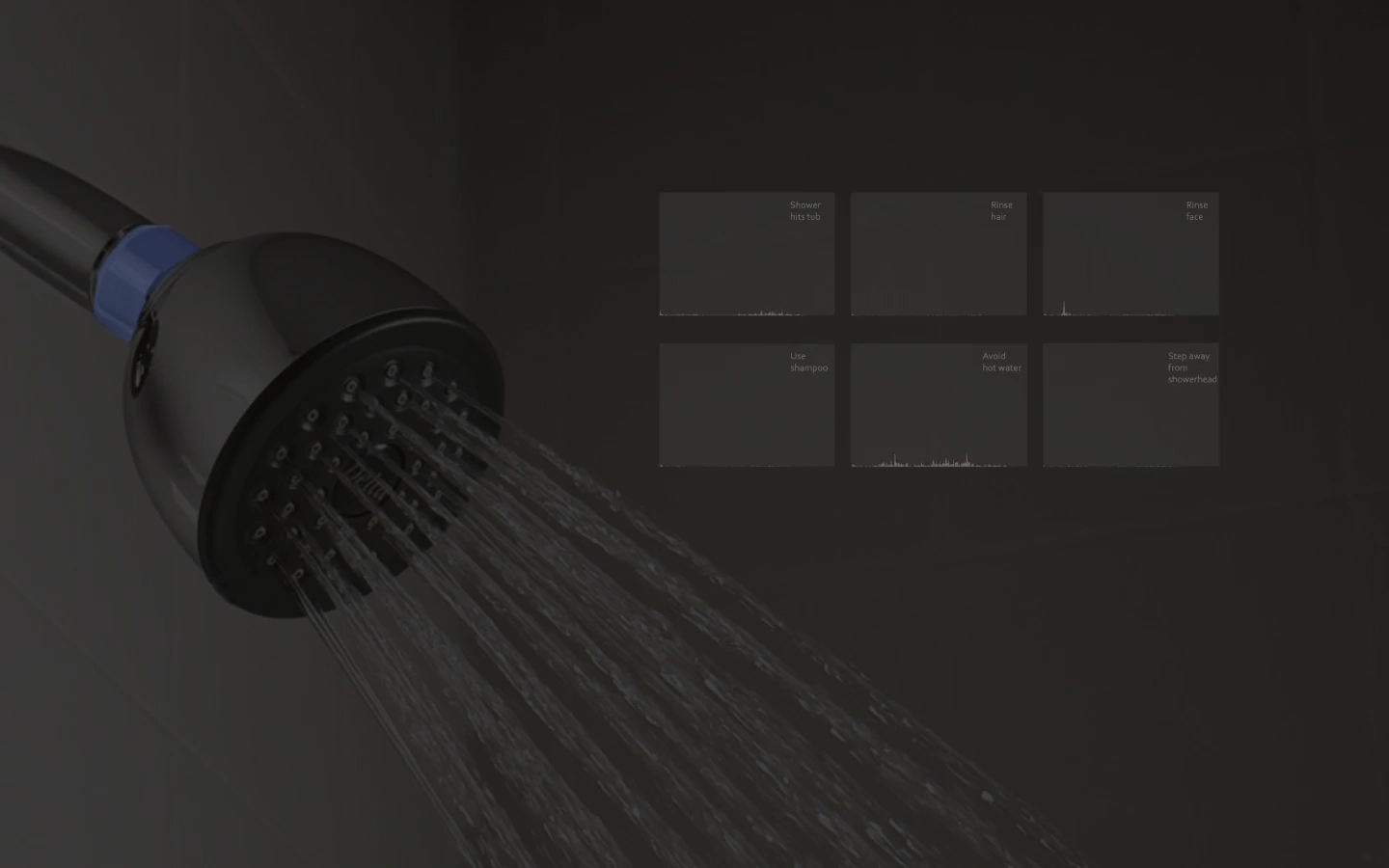

ShoweRing - Saving Shower via Data
My focus: Data Analysis, Product Strategy, Coding Prototyping
Instructors: John Cain, Laura Mast, Peter Binggeser
ShoweRing - Saving Shower via Data
My focus: Data Analysis, Product Strategy, Coding Prototyping
Instructors: John Cain, Laura Mast, Peter Binggeser
Intro
The goal of this project is to use a given dataset <Residential End Uses of Water, Version 2: Executive Report> published by Water Research Foundation and outline a product strategy that encourages user saving shower. This dataset contains all of the end use water events recorded in 1,000 households during 2016 study, along with the survey response data. For more data information, please visit www.waterrf.org/4309.
The final solution is ShoweRing, a smart shower head that senses user's shower events, such as washing hair, body or just letting water hit the tub, by analyzing the sound frequencies and adjusting shower rates without interfering user's behaviors. To show how it works, I used Fast Fourier transform(FFT) algorithm to run the sound data recorded by sound sensor and was able to demonstrate distinct sound frequency ranges during different shower events.
Problem framing
For the past 20 years, the average water use of toilet and clothes
washer have dropped at least by 30% but only slightly in shower.
What might be the critical factors that influence shower use in a household?
hypotheses
Shower amount is decided by age, household condition,
shower routine and attitude toward water conservation
Dive into data
Findings
1. Adult consumes more water per capita than other age groups.
2. Household income, house condition, and shower hour aren't primary factors of shower consumption.
3. Most households didn't take actions to conserve shower. They remember cost better than amount.
Why do not adults conserve shower?
user research
8 shower recordings | 5 interviews | 2 in-home observations
People want to conserve shower but have difficulties
changing behaviors. How might we help them conserve
shower without changing their shower behavior?
Introduce ShoweRing
People have low motivation to change their shower behavior. How might we encourage conserving shower without changing people's behavior? ShoweRing is a smart shower head that senses user's shower events, such as washing hair, body or just letting water hit the tub, by analyzing the sound frequencies and adjusting shower rates without interfering user's shower behaviors.
How it works?
Save water bill or Donate saving
I applied the San Francisco bill rate $8.23/hundred cubic feet(748 gallon)/month in the saving system, household can only save about $0.08 per shower, around $100 per year. This is not very high incentive for users. In order to encourage user connecting shower conservation to higher purpose, our app allows user to donate their water bill saving.
How to use sound frequency to analyze shower behavior?
Running FFT on processing to visualize the shape of frequency bands of various shower events






















